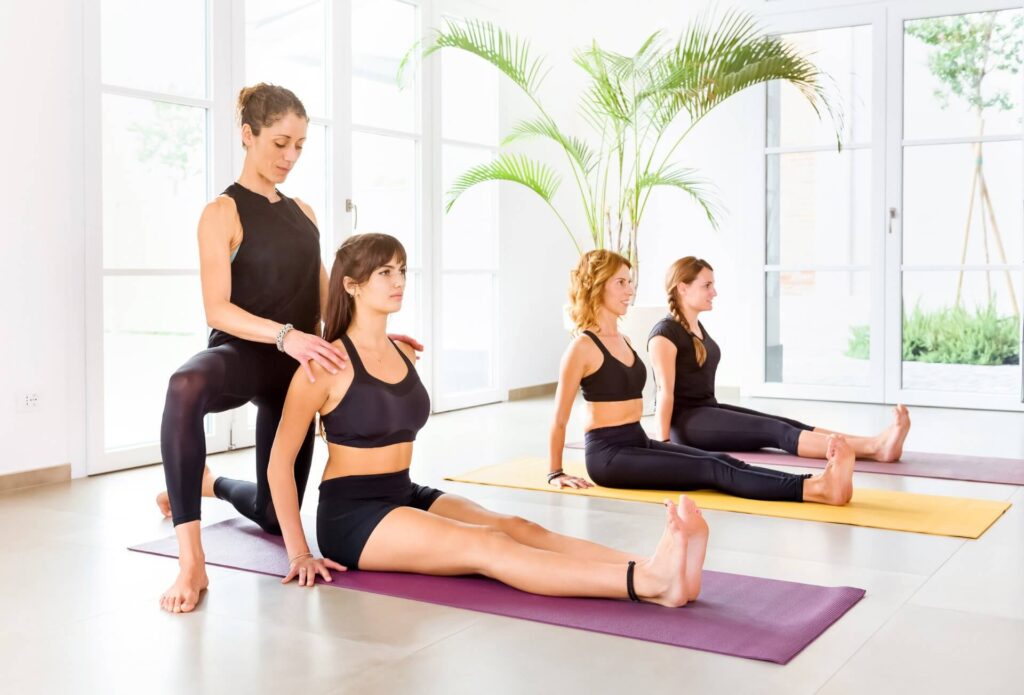Discover the foundational Staff Pose (Dandasana), a beginner-friendly yoga posture that fosters proper alignment, strengthens the back, and improves posture.
Staff Pose, or Dandasana in Sanskrit, is a fundamental yoga posture suitable for beginners. This seated pose serves as a cornerstone for various seated and forward-bending asanas. Dandasana promotes proper alignment, strengthens the muscles of the back, and is an excellent starting point for a yoga practice.
Origin and Symbolism
The name “Dandasana” is derived from two Sanskrit words: “Danda,” meaning “staff” or “stick,” and “Asana,” meaning “pose.” In this pose, your body is as straight and firm as a staff, symbolizing stability and balance.
Benefits Staff Pose
Staff Pose (Dandasana) offers a range of benefits, making it an essential pose for beginners:
- Spinal Alignment: Regular practice improves posture and helps align the spine correctly.
- Core Strength: Engaging the core muscles in this pose builds strength in the abdominal region.
- Enhanced Concentration: Dandasana encourages mindfulness and focus, promoting mental clarity.
- Preparation for Seated Poses: It serves as a foundation for more advanced seated poses and forward bends.
- Improved Flexibility: Over time, it increases flexibility in the hamstrings and lower back.
Step-by-Step Instructions Staff Pose

- Starting Position: Begin by sitting on your mat with your legs extended straight in front of you.
- Activate Your Legs: Flex your feet, pressing your heels into the mat. Engage your quadriceps to straighten your knees.
- Sit Tall: Place your palms flat on the mat beside your hips. Sit tall with your spine straight and shoulders relaxed.
- Engage Core: Activate your core muscles by drawing your navel toward your spine.
- Lengthen Your Spine: Inhale deeply, extending your spine upward as if someone is gently pulling the crown of your head toward the ceiling.
- Maintain a Neutral Neck: Keep your neck in a neutral position, neither tilting up nor down.
- Hold and Breathe: Hold the pose for 30 seconds to one minute while breathing deeply and steadily.
- Release: To exit the pose, exhale and lower your hands, then gently bend your knees and return to a seated position.
Variations and Modifications Staff Pose
If you have tight hamstrings, you can sit on a folded yoga mat or cushion to make the pose more accessible.For added support, place your hands on yoga blocks beside your hips.
Tips for a Deeper Practice
Focus on lengthening your spine and keeping it straight. Engage your core muscles throughout the pose to support your lower back. Relax your shoulders and facial muscles.
Preparation Staff Pose
- Easy Pose (Sukhasana): Start your practice with Easy Pose to prepare your body and mind for Dandasana.
- Bound Angle Pose (Baddha Konasana): After Staff Pose, consider practicing Bound Angle Pose to open your hips.
Staff Counter Poses
- Child’s Pose (Balasana): After Dandasana, relax your spine and stretch your lower back with Child’s Pose.
- Seated Forward Bend (Paschimottanasana): If you wish to further stretch your hamstrings and lower back, follow up with Seated Forward Bend.
Final Thoughts
Staff Pose (Dandasana) is a foundational yoga posture for beginners that promotes proper alignment, core strength, and improved posture. It serves as a solid starting point for developing a strong and balanced yoga practice.
Incorporate Dandasana into your routine to experience its physical and mental benefits. As you sit tall, align your spine, and engage your core, embrace the sense of stability and clarity it brings to your practice.
Begin your yoga journey with Staff Pose and let it be the sturdy foundation upon which you build strength, flexibility, and mindfulness.


